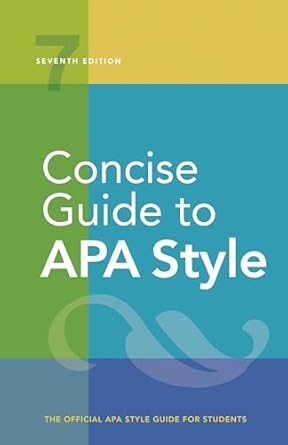[toc]
mastering citations avoiding plagiarism in your writing
Concise Guide to APA Style: 7th Edition (OFFICIAL)
Page 198 Review
The Importance of Proper Citation: A Commentary
This excerpt from a writing guide emphasizes the critical role of proper citation in academic and professional writing.
It delves into various aspects, from the basic necessity of crediting sources to the nuances of avoiding undercitation and overcitation.
Let’s explore the key takeaways.
Crediting Sources: The Foundation of Academic Integrity
The passage begins by stressing the fundamental principle of acknowledging the work of others: “Cite primary sources when possible and secondary sources sparingly (see Section 8.6).
In addition to crediting the ideas of others that you used to develop your thesis, provide documentation for all facts and figures that are not common knowledge.” This highlights that any idea, statistic, or image that isn’t widely known must be attributed to its original source.
Failure to do so constitutes plagiarism.
Paraphrasing and Direct Quotations: Both Require Attribution
The excerpt clarifies that both paraphrased material and direct quotations necessitate proper citation: “Both paraphrases (see Sections 8.23-8.24) and direct quotations (see Sections 8.25-8.34) require citations.” This is a crucial point often overlooked.
Even when you rephrase someone else’s idea in your own words, you are still building upon their work and must give credit where it’s due.
Beyond Text: Images and Copyright
The passage expands the scope of citation beyond just text, addressing images and copyrighted material: “If you reprint or adapt a table or figure (e.g., if you reproduce an image from the internet, even if it was free or in the Creative Commons) or reprint a long quotation or commercially copyrighted test item, you may also need to seek permission from the copyright holder and provide a copyright attribution (see Sections 8.35-8.39).” This emphasizes the importance of understanding copyright laws and obtaining necessary permissions when using copyrighted material.
The Right Amount of Citation: Avoiding Undercitation and Overcitation
The excerpt then addresses the delicate balance of citation: “Avoid both undercitation and overcitation.
Undercitation can lead to plagiarism (see Section 8.2) and/or self-plagiarism (see Section 8.3).
Overcitation can be distracting and is unnecessary.” It’s not enough to simply cite sources; you must do so judiciously.
Undercitation is a clear ethical violation, while overcitation can clutter your writing and distract the reader.
Practical Examples and Avoiding Repetition
The passage provides practical guidance on how to avoid overcitation: “For example, it is considered overcitation to repeat the same citation in every sentence when the source and topic have not changed.
Instead, when paraphrasing a key point in more than one sentence within a paragraph, cite the source in the first sentence in which it is relevant and do not repeat the citation in subsequent sentences as long as the source remains clear and unchanged (see Section 8.24).” This illustrates the importance of using common sense and ensuring clarity without unnecessary repetition.
Plagiarism: A Grave Offense
The excerpt concludes by explicitly defining plagiarism: “Plagiarism is the act of presenting the words, ideas, or images of another as your own; it denies authors or creators of content the credit they are due.
Whether deliberate or unintentional, plagiarism violates ethical standards in scholarship (see APA Ethics Code Standard 8.11, Plagiarism).
Writers who plagiarize disrespect the efforts of original authors by failing to acknowledge their contributions, stifle further research by preventing readers from tracing ideas back to their…” This underscores the serious consequences of plagiarism, both ethically and academically.
In essence, this passage serves as a comprehensive guide to proper citation, emphasizing its importance in maintaining academic integrity, respecting the work of others, and contributing to the advancement of knowledge.
Buy full ebook for only $18: https://www.lulu.com/shop/american-psychological-association/concise-guide-to-apa-style-7th-edition-official/ebook/product-rmzpq54.html?page=1&pageSize=4

